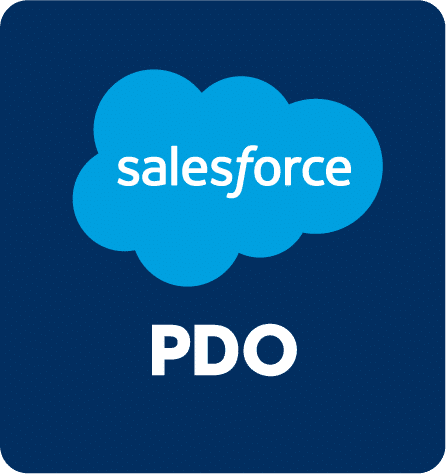
- Salesforce Pardot
Salesforce Pardot Integration: How to Make It Work for Your Business?
One of the catalysts for business development is the effective utilization of Salesforce Pardot, which aids in maximizing automation tools and offers a plethora of functionalities to streamline lead generation, nurture leads, and optimize marketing campaigns.
While acknowledging the benefits it brings to the business front, it is crucial to understand how to integrate this Pardot system into your business. Integrating this powerful platform with your existing business infrastructure can yield transformative results, enabling you to harness the full potential of your marketing efforts.
At Advayan, we are passionate about explaining and guiding you to implement the Salesforce Pardot service in your business organization. In this comprehensive blog, we discuss the Salesforce Pardot integration and explore various strategies to seamlessly incorporate it into your business workflow.
Read ahead to get a better understanding of the key benefits of integration to uncovering best practices and implementation techniques, we provide actionable insights to help you leverage Salesforce Pardot’s capabilities and achieve sustainable business growth.
Table of Content
- Pardot automates regular marketing tasks to streamline them, including
- Steps for Pardot Salesforce Integration
- Benefits of Pardot Salesforce Integration
- Salesforce Pardot: Generating High-Quality Leads for your business
- Potential Challenges to Consider in Salesforce Pardot Integration
- Conclusion
Pardot Automates Regular Marketing Tasks to Streamline them, Including
1. Tracking customer behaviors: By monitoring customer interactions, Pardot enables businesses to gain valuable insights into customer preferences and tailor marketing strategies accordingly.
2. Creating digital marketing campaigns: Pardot facilitates the seamless creation and execution of targeted digital marketing campaigns, ensuring personalized communication with prospects and customers.
3. Webform management: With Pardot, businesses can effortlessly manage web forms, capturing crucial customer information and enhancing lead generation capabilities.
4. Website tracking: Pardot’s website tracking feature empowers businesses to monitor website visitors’ behavior, enabling them to optimize website content and enhance user engagement.
5. Search engine optimization (SEO): Pardot aids in improving SEO efforts by providing valuable data insights, enabling businesses to optimize their online presence and increase their visibility in search engine results.
6. Social Media Automation: Pardot simplifies social media management by automating posts and interactions, enabling businesses to effectively engage with their target audience across various social media platforms.
7. Landing page marketing: With Pardot, businesses can create compelling landing pages, optimizing lead capture and conversion rates through effective marketing strategies.
8. Creating reports to track performance: Pardot’s reporting capabilities allow businesses to track the performance of marketing campaigns, providing valuable analytics for informed decision-making and future strategy planning.
9. CRM Integration: Pardot seamlessly integrates with Salesforce CRM, enabling businesses to unify marketing and sales efforts for a cohesive and efficient customer management experience.
10. Lead generation: Pardot’s lead generation capabilities help businesses identify and nurture potential leads effectively, fostering meaningful customer relationships and driving sales growth.
Steps for Pardot Salesforce Integration
1. Getting Ready for Integration: Understand the objectives and requirements of the integration, and ensure that both Pardot and Salesforce are properly set up for the process.
2. Install Pardot from Salesforce AppExchange: Access the Pardot app on the Salesforce AppExchange and install it into your Salesforce instance to initiate the integration process.
3. Set Up and Verify the Connector in Pardot: Configure the Pardot connector within the Pardot interface and verify that the connection between Pardot and Salesforce is established and functioning correctly.
4. Configure Salesforce for the Connector: Adjust Salesforce settings to enable smooth communication between Pardot and Salesforce, allowing data synchronization between the two platforms.
5. Customize the Sync Method: Tailor the synchronization method to suit your specific business needs, ensuring that the data flows accurately and consistently between Pardot and Salesforce.
6. Updating Workflows or Processes: Make any necessary updates to existing workflows or processes to accommodate the integrated Pardot and Salesforce systems, ensuring seamless operations between the two platforms.
7. Testing the Integration: Conduct thorough testing to verify that the integration is functioning as expected, with data syncing accurately and all processes running smoothly. This step is crucial for identifying and resolving any potential issues before fully implementing the integrated system.
Benefits of Pardot Salesforce Integration
Integrating Pardot with Salesforce offers a multitude of benefits that can significantly enhance your business’s marketing strategy. Here are some key advantages:
1. Simplified Data Management: The integration of Pardot with Salesforce guarantees smooth data synchronization, enabling a single view of client data that results in more focused and educated marketing campaigns.
2. Enhanced Lead Nurturing: Businesses can efficiently nurture leads through timely and tailored interactions, building better customer relationships, by fusing Salesforce’s extensive CRM features with Pardot’s lead nurturing capabilities.
3. Enhanced Campaign Effectiveness: Through integration, campaign performance can be tracked on both platforms, offering insightful information about the success of marketing initiatives and assisting in data-driven decision-making for future campaigns that are optimized.
4. Automated Marketing Processes: Integration frees up resources and allows companies to concentrate on high-impact jobs by automating several marketing processes, such as email marketing, campaign management, and lead scoring.
5. Detailed Reporting and Analytics: The Pardot Salesforce interface makes it easier to create detailed reports and analytics, which enables companies to evaluate the effectiveness of their marketing, spot trends, and modify their plans based on data.
6. Unified Customer Experience: Pardot and Salesforce integration makes for a smooth customer experience by guaranteeing communication consistency and offering a comprehensive picture of client interactions throughout the marketing and sales lifecycle.
Salesforce Pardot: Generating High-Quality Leads for your Business
In the world of digital marketing, producing high-quality leads is essential to long-term company success and growth. Businesses can optimize conversion rates and streamline their lead creation process using Salesforce Pardot Integration’s comprehensive lead management architecture. Businesses may efficiently discover and prioritize leads according to their engagement levels and conversion possibilities by utilizing Pardot’s advanced capabilities, such as lead grading and lead scoring.
1. Lead scoring: Businesses may give leads numerical scores based on how they interact with marketing campaigns and website content by using Pardot’s lead scoring features. By taking a methodical approach, companies may concentrate their efforts on leads that show a greater chance of becoming customers, which increases productivity and efficiency all around.
2. Lead grading: Using pre-established standards and parameters, Pardot’s lead grading feature enables companies to evaluate the caliber of leads. Businesses can classify leads into several tiers by assessing variables like industry, firm size, and demographics. This allows for the development of engagement tactics that are specifically targeted and customized for particular lead segments.
Through effective utilization of lead scoring and lead grading within the Salesforce Pardot ecosystem, businesses can optimize their lead generation efforts, nurture meaningful customer relationships, and drive sustainable revenue growth. Adopting these strategies can significantly enhance the overall efficacy of your marketing initiatives and contribute to the long-term success of your business.
Potential Challenges to Consider in Salesforce Pardot Integration
While Salesforce Pardot integration offers numerous benefits for businesses, it also presents certain challenges that need to be carefully addressed to ensure a smooth and efficient integration process. These challenges include:
1. Data Alignment and Consistency: Ensuring data alignment and consistency between Salesforce and Pardot can be a complex task, requiring meticulous data management strategies to prevent discrepancies and ensure accurate reporting.
2. Complex Configuration Process: Configuring Salesforce Pardot integration demands a comprehensive understanding of both platforms, necessitating skilled professionals to manage the intricate setup process effectively.
3. Data Security and Privacy: Safeguarding sensitive data during the integration process is crucial, requiring robust security measures to protect customer information and ensure compliance with data privacy regulations.
4. Training and User Adoption: Encouraging user adoption and providing adequate training for employees is essential to maximize the benefits of Salesforce Pardot integration and ensure seamless workflow integration.
5. Need for Technical Expertise: Overcoming the complexities of integration often requires specialized technical expertise, highlighting the importance of skilled professionals proficient in managing the integration process effectively.
To overcome these challenges and maximize the benefits of Salesforce Pardot integration, businesses can implement the following strategies:
- Create Detailed Reports Based on Collected Data
- Implement Lead Scoring to Prioritize Leads and Improve Sales Team Efficiency
- Recognize the Source of Truth
- Identify Data Quality Issues at the Earliest
- Set up automated alerts to notify Sales Reps of high-priority leads
- Utilize Dynamic Content and Personalization
Conclusion
Salesforce Pardot integration can greatly improve your marketing strategies and expedite client engagement procedures for your company. Through the utilization of its tracking features, automation powers, and smooth CRM connection, companies may efficiently cultivate leads, improve client relationships, and spur overall expansion.
Salesforce Pardot’s extensive feature set helps businesses make well-informed decisions by optimizing web presence, generating insightful marketing campaigns, and generating important data. Businesses may gain a competitive edge in the ever-changing digital landscape, promote sustainable growth, and open up new opportunities for success with a well-executed Salesforce Pardot integration. Accept the power of Salesforce Pardot integration and see how it may revolutionize the marketing efforts of your company.








